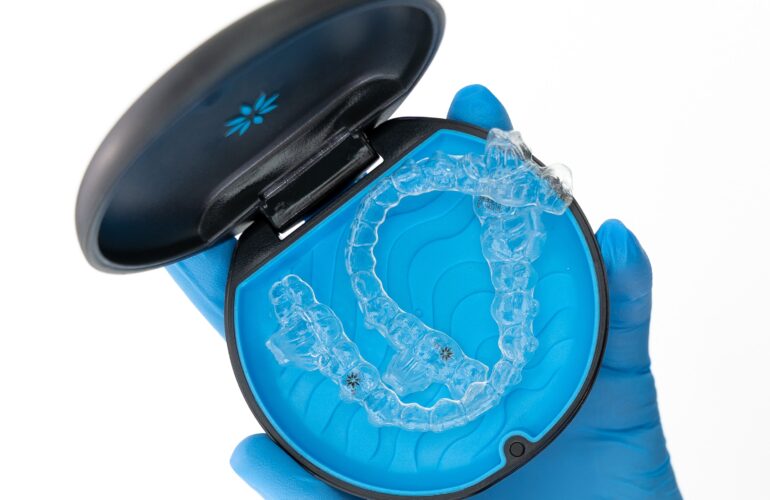Aligners vs Braces – only debate happening these days when it comes to achieving a straighter smile. These are two popular options often come into consideration. Both these orthodontic treatments have their unique advantages and considerations. In this comprehensive guide, we’ll delve into the key differences between aligners and braces, helping you make an informed decision for your journey to a more confident smile.
Aligners: The Modern Approach
1. Invisibility:
One of the most significant advantages of aligners is their discreet appearance. Made from transparent materials, aligners are nearly invisible, making them an attractive choice for those who want to straighten their teeth without drawing attention to their orthodontic treatment.
2. Removability:
Aligners are removable, allowing for greater flexibility in terms of eating, brushing, and flossing. This feature also means fewer dietary restrictions compared to traditional braces, providing a more convenient orthodontic experience.
3. Comfort:
Aligners are custom-made for each patient, ensuring a snug fit that minimizes discomfort. The absence of wires and brackets means a smoother experience without the potential for irritation that traditional braces may cause.
4. Treatment Time:
While the duration of treatment varies from case to case, aligners are often associated with shorter treatment times compared to traditional braces. The technology behind aligners allows for more predictable and efficient tooth movement.
Braces: The Time-Tested Solution
1. Effectiveness:
Braces have a long-standing reputation for effectively correcting even the most complex dental issues. They are particularly suitable for cases involving severe misalignment or bite problems.
2. Durability:
Composed of sturdy materials such as metal or ceramic, braces are known for their durability. This makes them a robust solution for individuals who may be concerned about the wear and tear associated with daily life.
3. No Compliance Concerns:
Unlike aligners, braces are fixed onto the teeth, eliminating concerns about patient compliance. Once they are placed, braces work continuously, providing a consistent force for tooth movement.
4. Affordability:
In some cases, braces may be a more cost-effective option compared to aligners. The upfront investment in braces can vary, making them a viable choice for those with budget considerations.
Making the Decision: Aligners or Braces?
1. Severity of Misalignment:
For mild to moderate misalignment, aligners may be a preferred choice. However, for more complex dental issues, braces could be the more suitable option.
2. Aesthetic Preferences:
Consider your preference for aesthetics. If you prioritize a discreet appearance, aligners may be the better fit. However, if aesthetics are a secondary concern, braces can still be a highly effective and durable choice.
3. Lifestyle and Maintenance:
Assess your lifestyle and how each option aligns with your daily routines. If you value the flexibility of removing your orthodontic device, aligners may be more convenient. If you prefer a fixed solution that requires minimal maintenance, braces could be the better choice.
4. Consultation with an Orthodontist:
Ultimately, the decision between aligners and braces should be made in consultation with an orthodontic professional. They can assess your specific needs, conduct a thorough examination, and recommend the most suitable treatment plan based on your individual case.
Finally it can be easily concluded that in the Aligners vs. Braces debate, there is no one-size-fits-all answer. The choice between these two orthodontic options depends on various factors, including personal preferences, lifestyle, and the severity of dental issues. By understanding the differences outlined in this guide and consulting with an orthodontic expert, you can embark on a journey towards a straighter, healthier smile with confidence.




